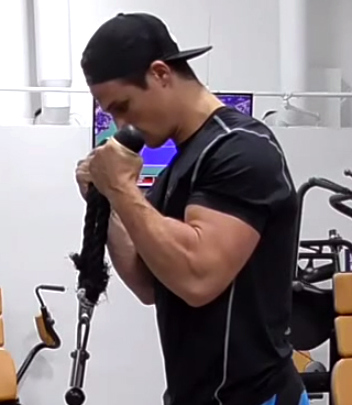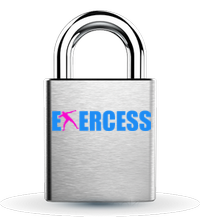Train Slower To Build Muscle Faster
I haven’t been looking over your shoulder (honest!) but I’m willing to bet your training routine hasn’t changed all that much recently. And if you’re not seeing the results you were hoping for, maybe that’s the reason. One of the things you can do to re-energise your workouts is to switch things around a bit. Do more sets, or more reps, increase or decrease the weights you’re using, do the exercises in a different order … or just change your exercise tempo.
A change is as good as a rest …
 We’re probably all familiar with the idea of changing the number of sets or reps, or doing things in a different order, but tempo … that comes as a surprise to most people. They just don’t realise how much it can affect the outcome of an exercise to change the speed. But the thing to keep in mind is that if you slow down an exercise, and as long as you keep the form strict, you are putting the muscles under strain for a lot longer. And TUT (time-under-tension) can make a tremendous difference. In fact, it can totally change the results of your training. Even if you have to use lighter weights.
We’re probably all familiar with the idea of changing the number of sets or reps, or doing things in a different order, but tempo … that comes as a surprise to most people. They just don’t realise how much it can affect the outcome of an exercise to change the speed. But the thing to keep in mind is that if you slow down an exercise, and as long as you keep the form strict, you are putting the muscles under strain for a lot longer. And TUT (time-under-tension) can make a tremendous difference. In fact, it can totally change the results of your training. Even if you have to use lighter weights.
In fact, it can feel so different that the same weight can feel very much heavier. If you’re used to doing curls with about sixty pounds, for example, you might have to drop that down to forty-five to complete a really good set. Alternatively, you can stick with the sixty pound bar and go for the same number of reps but settle for just two sets instead of your usual, which might be, let’s say, four or five sets.
Training like this can feel very different indeed. And nobody’s saying you have to keep this slow-motion exercise routine going for any length of time; if you just slot in a slow-motion session once every three or four weeks you might be surprised how much benefit you get out of it.
Try it with everything!
You can apply this to practically anything. Try slow-motion squats, or leg presses … bench press, overhead press … curls, triceps press downs … cable crossovers … anything. You can even revisit some old favourites that you might have been neglecting, such as press ups or crunches.
NOTE: If you’re doing really heavy work, such as squats, I don’t recommend that you go super slow. If you normally take one to two seconds to squat down and the same to stand up, just aim to take about a second longer on each trip, and hold the bottom position for a second or so longer. Again, it might be necessary to reduce the weight accordingly, and you’ll only know by how much through experimentation.
Low pulley rowing is a prime example of an exercise that’s perfect for the slow-motion treatment. As long as the weight is not more than you can handle at a slower speed, it can almost be guaranteed to give you a whole new insight into the exercise. And if you’re using a rope handle you’ll be able to drag that weight way back till your elbows are as far back as physically possible, and you’ll feel that tremendously in your lats.

Benefits of slow motion exercise
The benefits of slow motion exercise could fill a book, but I’ll do what I can to distil them to an easy-to-digest list:
-
- Mind/body connection
Doing slow, deliberate exercise can result in a greater mind/body connection; you’ll be able to feel every muscle fibre contracting harder and more effectively than ever, which of course helps you visualise the improved results much more clearly. - Strength
Slow motion exercise makes you move more precisely, and it promotes greater strength. You’ll find it easier to focus all your attention on the working muscles, and you’ll feel the difference. Pretty soon you’ll appreciate the difference in your strength levels.
- Mind/body connection

Sorry ... MEMBERS ONLY!
UNLOCK FOR FULL EXERCESS!EXERCESS is an online community of people who want to seriously improve their health and fitness, both mental and physical.
JOIN FREE TODAY!
… and get complete and unfettered access to an absolute goldmine of valuable information.
Already a member? Sign in!
